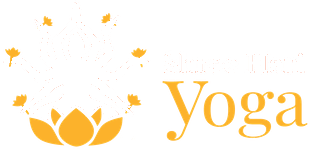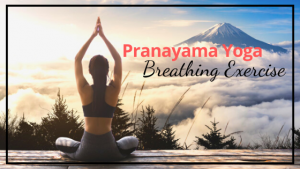Pranayama Yoga Breathing Exercise
Breathing is a vital function of life, something that we do every day and all the time. There is an entire branch of yoga that is just dedicated to Pranayama Yoga Breathing Exercise called Pranayama.
Therefore these exercises focus on bringing awareness and controlling the flow of your breath. To perform the asanas in rhythm while resting the mind for meditation.
Pranayama not only helps in supporting and deepening your yoga practice but also greatly benefits all aspects of your life.
What is Pranayama?
Pranayama is one of the eight limbs of yoga included in the yoga sutras by Patanjali and is regarded as a valuable tool in restoring the balance between the body and the mind.
The term Pranayama originates from Sanskrit, where “Prana” means breath i.e the vital energy in the body, and “Ayama” means to control.
Together it means the control of breath in the body which has long been deemed as a fundamental aspect of yoga.
Prana is a force of life that allows our body and mind to function properly. By paying close attention to prana and regulating its flow through yoga poses you can increase self-awareness, as a result, you will achieve a higher state of meditation.
There are five forms of Prana based on its functionality & movement called Vayus. Each Vayu has its significance & governs a specific area of the body.
They all work in harmony and any imbalance can cause improper functioning of the body & mind.
The Five Vayus of Prana:
These vayus are highly effective and allow the mind, body, and soul to work in coordination.
| Vayu | Area of Movement | Function |
| Prana | Chest and Head | Governs intake, inspiration, propulsion, forward momentum |
| Apana | Pelvis | Governs elimination, downward and outward movement |
| Samana | Navel | Governs assimilation, discernment, inner absorption, consolidation |
| Udana | Throat | Governs growth, speech, expression, ascension, upward movement |
| Vyana | Entire Body | Governs circulation on all levels, expansiveness, pervasiveness |
We have no control over whether we breathe or not, but we definitely can control the way we breathe to some extent.
Just like our breathing is highly influenced by our thoughts, similarly, our thoughts are also affected by the way we breathe.
Breathing exercises, such as the retention of breath and channelizing it for specific benefits have been the true essence of any pranayama practice.
Here are 3 powerful pranayama yoga breathing exercises to help you get started:
Sama Vritti Pranayama (Equal Breath)
As the name suggests, this pranayama yoga breathing exercise is performed by taking deep, long, and slow breaths in an equal duration of time.
As this exercise bounds you to completely focus on equalizing the breath, it will give your mind that much-needed break from its usual thoughts and activities.
Whenever you feel stressed out or disconnected, perform this yoga breathing exercise as it is extremely effective in soothing your nervous system and stabilizing your vata.
Ujjayi Pranayama (Ocean Breath)
It is a very fascinating exercise because it soothes the sympathetic nervous system and at the same time boosts the consumption of oxygen in your body.
This form of exercise allows you to breathe deeply through your nose to fill the lungs with oxygen. This is the primary breath technique that is used throughout Ashtanga and Vinyasa practice, maintaining a strong flow.
Above all, it helps in synchronizing your breath with movements during the yoga practice to make it more rhythmic.
Nadi Shodhana (Alternate Nostril Breathing)
Nadi Shodhana, also known as the Alternate Nostril breathing exercise helps in balancing the energy channels at both sides of the body.
It involves alternatively inhaling and exhaling between the left and the right nostrils. This process helps to harmonize the left and right regions of the brain and allows the mind to enter into a meditative state.
Breathing alternatively has been shown to help keep the mind at peace and restore balance to your nervous system.
Performing these pranayama techniques daily will help in improving your health and well-being. By regularly practicing deep breathing exercises, you will begin to breathe more effectively even without focusing on it.
How do you start with Pranayama Yoga?
There are a lot of yoga schools that use Pranayama as a part of their practice but if you want to deeply learn the philosophy of pranayama then you can join our 100-hour meditation and pranayama teacher training course.
This training has been designed for the ones who want to learn standard techniques and primary skills as well as for the ones who already have gained knowledge about asanas and meditation.
This training is intended to focus deeply on the breathing and meditative aspect of yoga. At the end of this teacher training course, you will be more relaxed and restored than ever before.
You will discover a new self that will be much stronger physically as well as mentally.
Hence, this 100 Hour of meditation and pranayama teacher training is aimed at giving you a firsthand experience of Prana.
Prana– our force of life, and the different ways to practice Pranayama – the techniques which use the breath to achieve a deeper state of meditation.
Interested in learning more about our Pranayama and meditation teacher training?
Check out the course packages on our website or contact us for more details.


